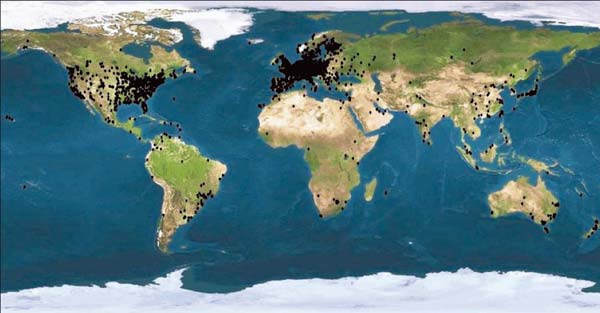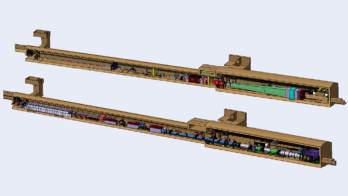I first met Rytis Slatkevicius in 2006, when he was 18. At the time, he had assembled the world’s largest database of prime numbers. He had done this by harnessing the spare processing power of computers belonging to thousands of prime-number enthusiasts, using the internet.

Image credit: Swiss Tropical Institute.
Today, Rytis is a mild-mannered MBA student by day and an avid prime-number sleuth by night. His project, called PrimeGrid, is tackling a host of numerical challenges, such as finding the longest arithmetic progression of prime numbers (the current record is 25). Professional mathematicians now eagerly collaborate with Rytis, to analyse the gems that his volunteers dig up. Yet he funds his project by selling PrimeGrid mugs and t-shirts. In short, Rytis and his online volunteers are a web-enabled version of a venerable tradition: they are citizen scientists.
There are nearly 100 science projects using such volunteer computing. Like PrimeGrid, most are based on an open-source software platform called BOINC. Many address topical themes, such as modelling climate change (ClimatePrediction.net), developing drugs for AIDS (FightAids@home), or simulating the spread of malaria (MalariaControl.net).
Fundamental science projects are also well represented. Einstein@Home analyses data from gravitational wave detectors, MilkyWay@Home simulates galactic evolution, and LHC@home studies accelerator beam dynamics. Each of these projects has easily attracted tens of thousands of volunteers.
Just what motivates people to participate in projects like these? One reason is community. BOINC provides enthusiastic volunteers with message boards to chat with each other, and share information about the science behind the project. This is strikingly similar to the sort of social networking that happens on websites such as Facebook, but with a scientific twist.
Another incentive is BOINC’s credit system, which measures how much processing each volunteer has done – turning the project into an online game where they can compete as individuals or in teams. Again, there are obvious analogies with popular online games such as Second Life.
Brains vs processors
A new wave of online science projects, which can be described as volunteer thinking, takes the idea of participative science to a higher level. A popular example is the project GalaxyZoo, where volunteers can classify images of galaxies from the Sloan Digital Sky Survey as either elliptical or spiral, via a simple web interface. In a matter of months, some 100,000 volunteers classified more than 1 million galaxies. People do this sort of pattern recognition more accurately than any computer algorithm. And by asking many volunteers to classify the same image, their statistical average proves to be more accurate than even a professional astronomer.
When I mentioned this project to a seasoned high-energy physicist, he remarked wistfully, “Ah, yes, reminds me of the scanning girls”. High-energy physics data analysis used to involve teams of young women manually analysing particle tracks. But these were salaried workers who required office space. Volunteer thinking expands this kind of assistance to millions of enthusiasts on the web at no cost.
Going one step farther in interactivity, the project Foldit is an online game that scores a player’s ability to fold a protein molecule into a minimal-energy structure. Through a nifty web interface, players can shake, wiggle and stretch different parts of the molecule. Again, people are often much faster at this task than computers, because of their aptitude to reason in three dimensions. And the best protein folders are usually teenage gaming enthusiasts rather than trained biochemists.
Who can benefit from this web-based boom in citizen science? In my view, scientists in the developing world stand to gain most by effectively plugging in to philanthropic resources: the computers and brains of supportive citizens, primarily those in industrialized countries with the necessary equipment and leisure time. A project called Africa@home, which I’ve been involved in, has trained dozens of African scientists to use BOINC. Some are already developing new volunteer-thinking projects, and a first African BOINC server is running at the University of Cape Town.
A new initiative called Asia@home was launched last month with a workshop at Academia Sinica in Taipei and a seminar at the Institute of High Energy Physics in Beijing, to drum up interest in that region. Asia represents an enormous potential, in terms of both the numbers of people with internet access (more Chinese are now online than Americans) and the high levels of education and interest in science.
To encourage such initiatives further, CERN, the United Nations Institute for Training and Research and the University of Geneva are planning to establish a Citizen Cyberscience Centre. This will help disseminate volunteer computing in the developing world and encourage new technical approaches. For example, as mobile phones become more powerful they, too, can surely be harnessed. There are about one billion internet connections on the planet and three billion mobile phones. That represents a huge opportunity for citizen science.





